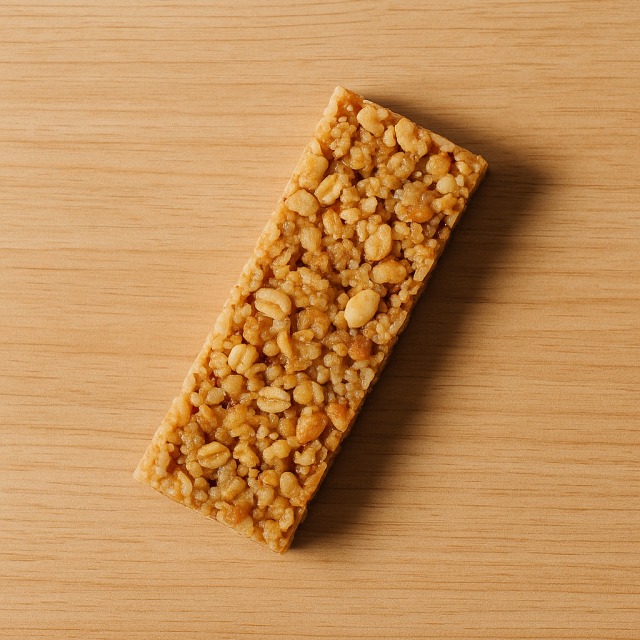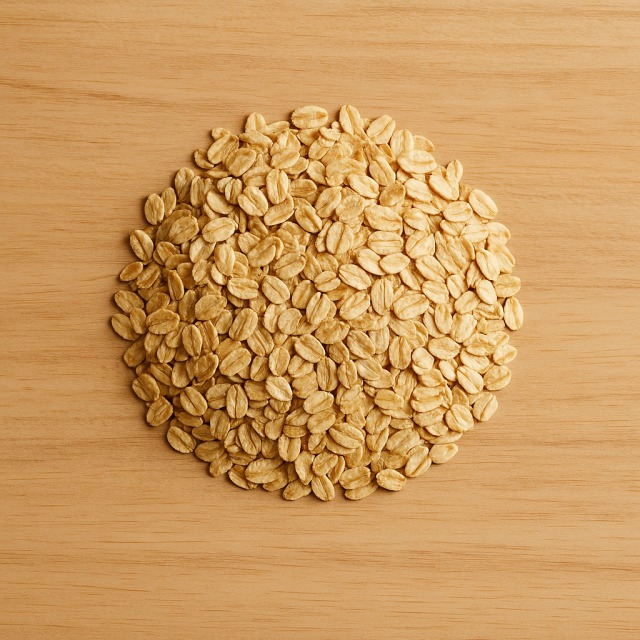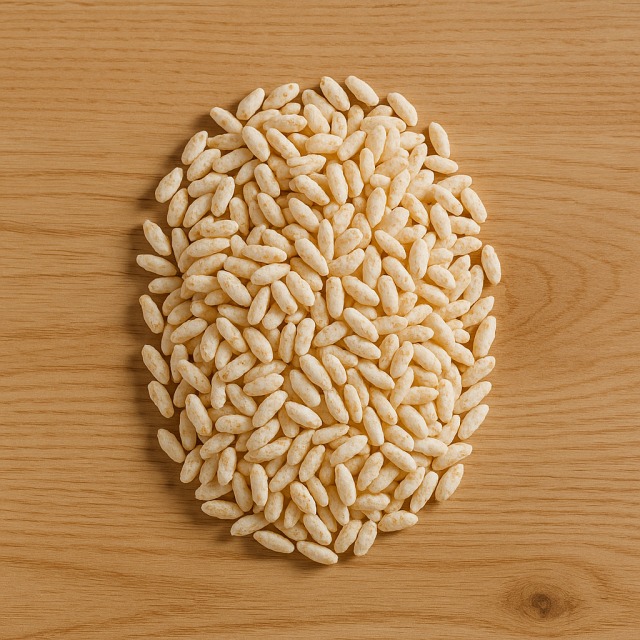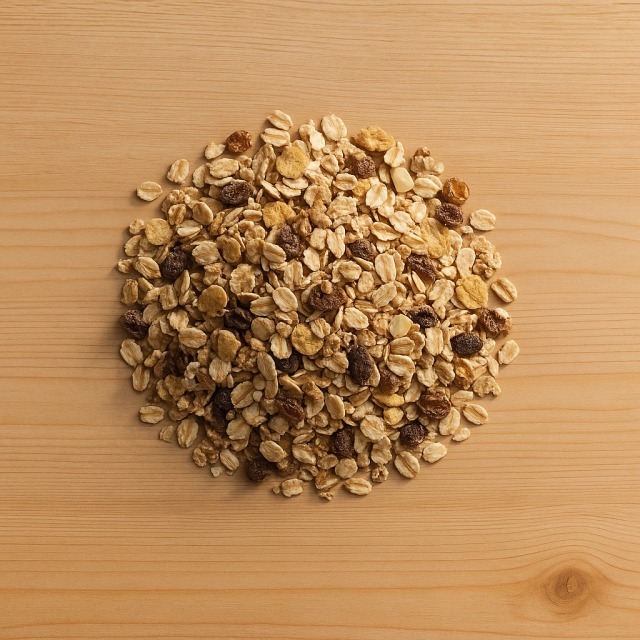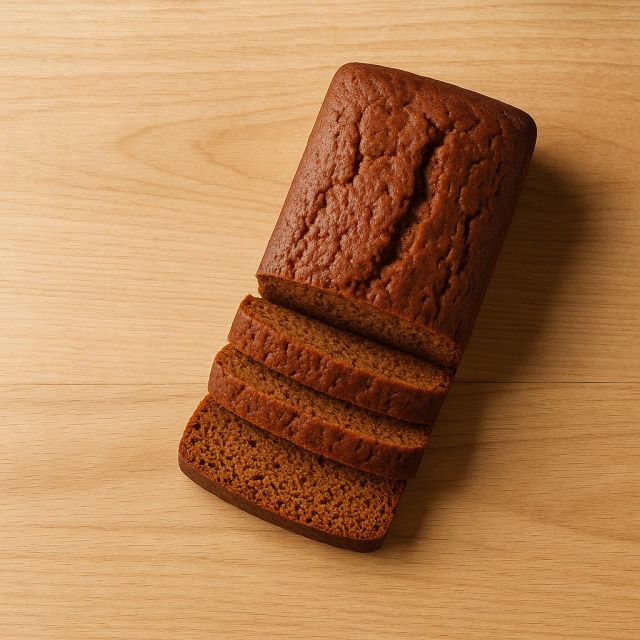Calorie Chart / Breakfast, Snacks / Cereal and fruit bar
How Many Calories Are in Fruit cereal bar?
Calculation of the nutritional value & Recommended Dietary Intake of fruit cereal bar
For g and a calorie requirement of kcal
| Calories 97 kcal | Proteins 1.6 g | Lipids 1.7 g | Carbohydrates 19 g |
| 5% | 2% | 3% | 7% |
Health benefits of fruit cereal bar
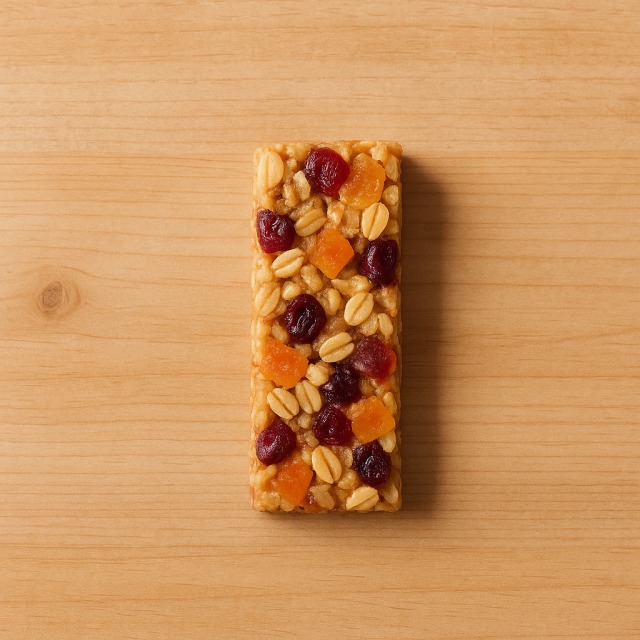
Fruit cereal bar - 100g
Calories 386 kcal
Proteins 6.2 g
Lipids 6.6 g
Carbohydrates 75.5 g
The fruit cereal bar is a smart pocket-sized snack that concentrates a noticeable amount of calories in just a few bites. Because it mixes whole-grain cereals and pieces of dried fruit, it is generally considered a moderate- to high-calorie food, ideal when you need calories fast but still want some nutritional value. Those calories come mostly from complex carbohydrates that are slowly released, helping to stabilise energy levels during the morning or a long hike.
The cereal component—frequently based on oat flakes or puffed rice—supplies B-group vitamins (B1, B3, and B6) that aid normal metabolism of calories. Whole grains also bring iron and magnesium, two minerals essential for fighting fatigue that can follow a sudden drop in calories. A useful dose of soluble and insoluble fibre contributes to digestive comfort.
The dried-fruit layer (raisin, dried apricot, or diced date) adds natural antioxidants such as polyphenols and vitamin E. Potassium, found in abundance in most dried fruits, assists muscle contraction and fluid balance—important when physical effort makes you burn additional calories. Even though sugars increase the overall calories, they are accompanied by these micronutrients rather than empty energy.
Thanks to its compact format, the bar emerged in the 1970s health-food movement in the United States, when athletes and busy professionals looked for ways to carry calories without resorting to chocolate bars. Today, it remains a convenient fallback for travellers, students during exam periods, or anyone needing calories on the go.
Tips for incorporating fruit cereal bar into a balanced diet
Because a fruit cereal bar delivers calories quickly, integrate it strategically. At breakfast, pair one bar with a pot of yogurt and fresh apple slices: the extra protein and water content of the dairy and fruit temper the calories while extending satiety. If you are watching calories, halve the bar and crumble it over warm compote for a lighter yet crunchy topping.
Before a workout of more than 60 minutes, eat half a bar about 30 minutes prior, then the other half right after to replenish calories alongside a hard-boiled egg for protein synthesis. Endurance athletes who need higher calories can combine the bar with a handful of almond kernels for extra healthy fats.
Home bakers can melt a spoon of honey with a dash of cinnamon, coat broken cereal-bar pieces, and press the mix into silicone moulds to create bite-sized snacks that ration calories more precisely. A diced bar also livens up a bowl of muesli without the need to add more sugar.
Finally, remember portion control: although the bar fits easily in a pocket, its calories add up. Drink water or herbal tea alongside; the extra fluid volume helps your stomach register the incoming calories sooner.
Frequently Asked Questions
- How many calories are in a fruit cereal bar?
- There are 386 kcal per 100 g.
- Are fruit cereal bars good for weight loss?
- They can fit into a weight-loss plan if you account for their calories and limit portions to curb excess calorie intake.
- Do fruit cereal bars offer more nutrients than a chocolate bar?
- Yes, they generally provide fibre, B-vitamins, and minerals alongside their calories, whereas a standard dark chocolate bar delivers mostly fat and sugar calories.
- When is the best time to eat a fruit cereal bar before exercise?
- About 30 minutes before training; this timing lets the carbohydrates convert into usable calories without causing digestive discomfort.
- Can I replace breakfast with a single fruit cereal bar?
- It supplies quick calories but lacks protein and hydration; pairing it with semi-skimmed milk or light yogurt yields a more balanced calorie distribution.
Similar foods
Information provided by Calorie Menu may contain inaccuracies or errors. It cannot, under any circumstances, substitute medical advice or medication.
